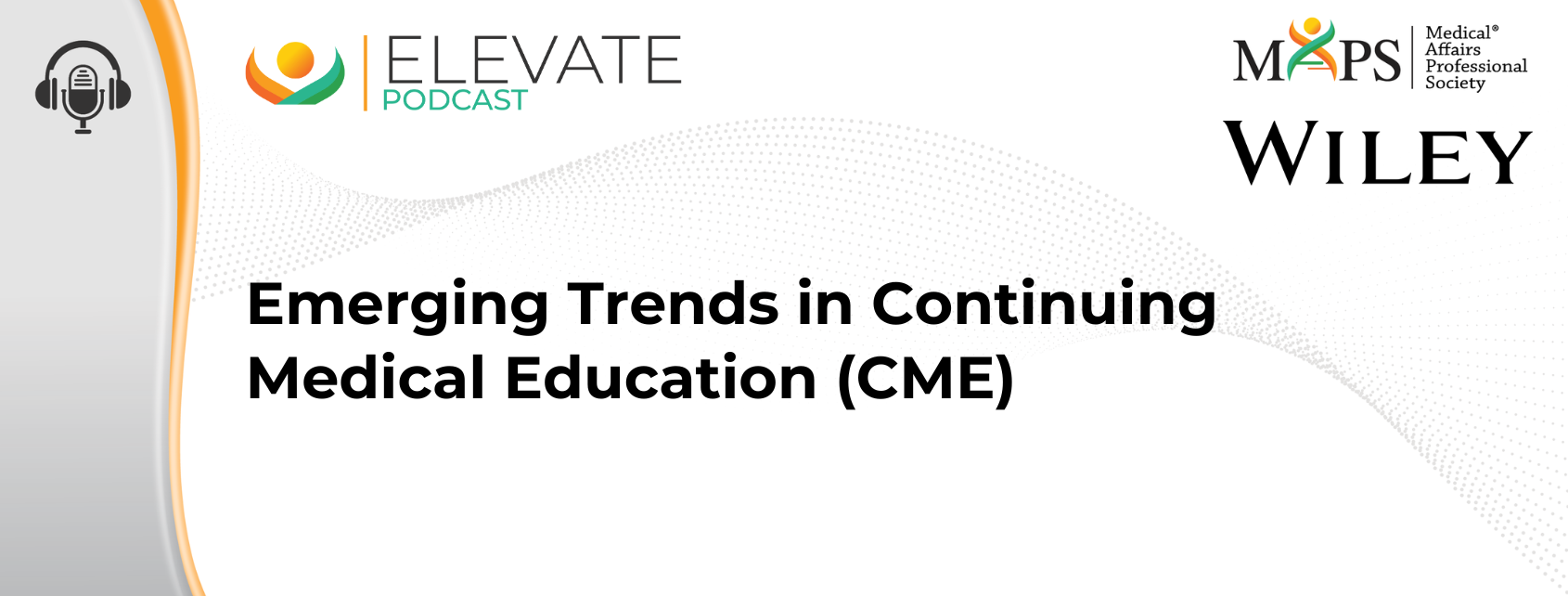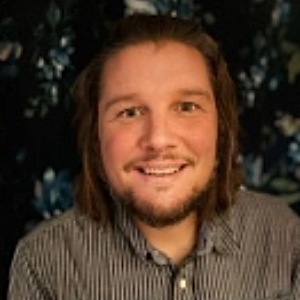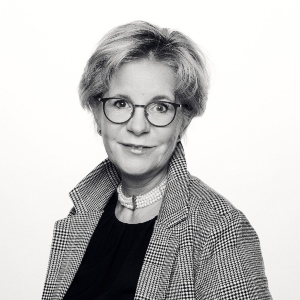Emerging Trends in Continuing Medical Education (CME)
Speaker: David Kempe
Speaker: Geoff Covey
Speaker: Dr. Eva Thalmann
Continuing Medical Education (CME) is transitioning from in-person, day-long seminars to bite-sized, virtual, learn-at-your-own pace courses. Here we talk with experts from Wiley and the world of consulting about new directions in CME — and how to address the continuing need for social learning and perceived authority even as we make information more consumable.
Following is an automated transcription provided by otter.ai. Please excuse inaccuracies.
Garth Sundem 00:00
Welcome to this episode of the Medical Affairs Professional Society podcast series “Elevate”. I’m your host, Garth Sundem, Communications Director at MAPS. And today we’re talking about emerging trends in continuing medical education with David Kempe, Accreditation Manager at Wiley, Geoff Covey, Associate Director for Independent Medical Education at Wiley, and Dr. Eva Thalmann, Ex-Medical Affairs at Janssen, and now an independent consultant. This episode is sponsored by Wiley. The views expressed are those of the presenters and do not necessarily represent their organizations. So, Geoff, what’s going on with CME? We’ve seen things go from the standard one or two day in person meeting to other stuff. Catch us up on how CME is evolving.
Geoff Covey 00:57
Great, yeah, thanks, Garth really pleased to be to be on the show today. I think one of the biggest shifts in recent times has been the move towards online learning, you know, which is of course, expedited during COVID. You know, this has been driven by other factors, too, I think most notably the time pressures that HCPs faced, which in turn then is driven changes in HCP consumption preferences for for medical education. I think if we think about how we consume content, outside of medical education, you know, this has changed radically over the past decade, we only have to sort of look at the rise of on demand streaming services for music and TV films, or, of course, the evolution of social media platforms with that rise of short form content. So if we look at the medical education landscape, I think what we’re seeing is some of these reflections here, you know, such as this desire for the shorter sort of Bite, bite sized content forms that are available on demand, and they’re accessible from multiple devices and platforms, I think that’s really key that you know, people are looking for, for content, not just in one place, but from multiple sources. However, you know, we’re in an age where we are witnessing a content overload. So, with so much content, and so many channels available, I think what’s really key is credibility. So it’s vital that healthcare professionals are able to access, you know, reliable, independent education from trusted sources, which is where, you know, providers such as us here at Wiley, but also others, you know, can play a really crucial role. So, I think, you know, we could all agree is that digital brings with it the relative ease, to measure and report on data, you know, with these activities in these programs. I think, also What’s critical is that we engage with a bright audiences, you know, quality, not necessarily quantity of audiences, and to ensure that we address HGPs learning needs, you know, through robust educational needs assessments with the programs designed to drive knowledge gain, and behavioral change. So, I think for me, those are the those are the sort of the key shifts, there’s, there’s still a place very much so for longer programs and live in person events, longer courses, but I think one of those major shifts has been to online and has been to the the availability of short form and bite sized content, almost a multi format approach.
Garth Sundem 03:44
That’s interesting. So maybe as we shift more towards bite sized and consumable, and online, we have to confront the credibility problem, or not problem challenge that comes with more bite sized content. But even David, what, what, what trends are you noticing with CME initiatives?
Eva Thalmann 04:05
Yeah, no, no, I think actually, it is. And hello, everybody, and thank you for the invitation. I think Oregon is summed it up very nicely. I actually have to say, I see also a trend now immediately post COVID. Again, dependent goes back a little bit and all of a sudden, we want to be, again into face to face meeting. So I think what we might have missed you in COVID. And where we need to make more efforts from a digital perspective, is this whole social learning, so that we not only go in and have an I agree, actually be shorter programs. So we cannot transfer face to face one to one to digital. This doesn’t work. We know it, but also to keep to build communities of learning who can work digitally together. And it’s not only you go in a webinar, you will listen to a podcast or you do a learning model. So I think the social aspect of learning, we need to point into digital, which I think is, you know, really crucial. And this is why we wanted to go back to face to face, just this one aspect.
Garth Sundem 05:15
David, what do you think?
David Kempe 05:18
Hi, and thank you for having me. I think in addition to what Geoff mentioned about bite sized learning, and what Eva is saying about the desirability of translating that, that social collaborative component online, you know, we’re also seeing an increase in uptake for self directed activities. For widely this can be earning credits through completing peer review or point of care internet searching and learning activities that allow for for reflection on trusted content and, and can be collaborative for already taking place within the bounds of professional practice. Essential evidence Plus is a point of care database that offers CME historically, we would see this program number in the hundreds for credit claims annually. But But now, with an increase over the past few years, it’s it’s tracking in the in the 1000s. What I find interesting here is that is that as part of this process, we we ask learners, we ask what learners we’re trying to determine during the activity. Treatment and Diagnosis is always the number one and two. But a response that’s grown significantly in the past few years has been, has been teaching or learning tactics, suggesting to us that professionals aren’t just out to expand their own knowledge base to improve patient outcomes, but to expand their their communication skills and capabilities as educators for others as well.
Garth Sundem 06:45
So what I’m hearing are a lot of ideas, it sounds like, you know, pre COVID, we had something that was fairly settled. And of course, it was still evolving a little bit, but, you know, COVID just fractured it right. And now, it’s almost like, the possibilities are endless. You know, I’m hearing social learning, I’m hearing small bite sized content, consumable self directed online learning. Are there approaches that are emerging from this Fractured Space that are successful? Like when you’re when you’re creating educational activities or programs? You know, what, what strategies what what approaches have actually been successful for you? Anyone? I can point to someone but go ahead. Eva, I see you go for it.
Eva Thalmann 07:37
I actually have to say, you know, my experience the more learner-centric a program is. The clearer a program is of what should be the learning outcome what is expected from the learner Nya, the more successful it is, if it’s just a little bit and sorry for the German expansion wishy washy program doesn’t really go down to the bed. So the learner simplicity, I think is really is really important.
Garth Sundem 08:06
Wishy washy is a German expression? For us in German, what do you what do you say? Oh, no. Geoff, David, what’s what’s emerging as success? So learner centric, all right, not just what we want to teach people, but what the learner wants to know what they’re gonna get from it. So maybe making that promise very explicit, you know, come to this program, you will, you will have this learning outcome. What What else is emerging from this Fractured Space? Geoff, what do you think?
Geoff Covey 08:39
Yeah, so, for us, I think, you know, the MCS format approach has been hugely successful. As educators, you know, it’s critical that that source material is always based on the peer reviewed evidence. However, you know, the format in which the information is disseminated should be there should be varying I feel to allow us to meet the needs of a broad range of consumption preferences. So I think widely one of our key strengths lies with our global society partnerships. You know, This, coupled with the multi channel communication approach and rich medical journal portfolios has helped us to ensure that we reach the right communities with our educational content, you know, installing that confidence amongst our audience as a credible provider. What worked well recently was a multicomponent program that we delivered in partnership with the American Cancer Society. It was really designed to address specific knowledge gaps relating to hormone sensitive prostate cancer. For this program, we used as sort of a mix of content format, so we didn’t just rely on one activity to educate the audience. We we delivered a range of have different activities in different lengths, different formats, so that we can engage with a range of clinicians. So you had a longer for example, webinar, a journal article based content for those who wanted that deeper dive into the subject matter. But you also have those sort of take away elements, for example, like a quick downloadable infographic or a short one minute summary. But for those who were interested, but didn’t necessarily want to have to consume all of the detail that they could they could be a part of that program as well. So I think for us, it was what that that success was, was demonstrated with those formats that reached multiple touch points. So you know, you could engage a range of learners who had an interest in the subject matter, rather than just saying, Okay, well, if you’re a specialist, yet, you can have the deep dive but for everybody else was sorry, there isn’t anything available. So that’s, that’s what we wanted to try to avoid to make it an inclusive program that reached to a broad range of healthcare professionals.
Garth Sundem 11:05
There’s a couple of things I want to dig in on there. But it’s interesting that you you identified the knowledge gaps, you looked at how your peer reviewed material could address those knowledge gaps, and then you looked at what multiple formats you could use to to deliver that peer reviewed information to fill those knowledge gaps. David, did you did you want to chime in with another strategy or approach that seems like it’s becoming I don’t know a best practice or at least has been successful from your perspective.
David Kempe 11:38
So, I mean, this this may just be be reiterating the the thought that you know, the best strategy is to ultimately know your know, your target audience know, the target, know, the know, the practice gaps, that would be beneficial to your audience. And in adapt format as as needed. As a final step before the activity development process begins. You know, we’ve had success in the, in the hematology space through through not necessarily, you know, a typical format, but a, but but an ongoing podcast series, where we have not just individual activity, an activity level objective to to pursue, but we also have a set of overarching program objectives that are that are obtainable through continuous participation. So, so step by step strategies to not not just provide a single activity, but a what sort of a portfolio of activities that are particularly relevant to a target audience. The other the other thought about that is more towards what your activities can, can be or it can be offering that is specifically to that target audience. Right. So the addition of maintenance of certification credits, or NPD, NPI tracking for for credit level, state and licensure in areas in which you can pursue that would be of particular interest to that audience that you’re trying to to, to court.
Garth Sundem 13:13
I’m hearing audience centric, audience centric, audience centric. And I’ve heard about that podcast format, but it just never seems to work out very well. Does it, David? No, I’m kidding. Because we’re on a podcast right now.
Eva Thalmann 13:31
Okay, so we can add something to it, because it was actually looking into the into the prostate cancer program. Geoff just talked about that. And I think there’s another thing what’s what people really like? I mean, and I also saw it out of the survey, you guys were elated. People like to understand to immediately, you know, get the newest strengths, the newest data out of big conferences, they very often actually go back, listen to the presentations. But what they also like, is actually discussions between experts between the peers in how to apply the data in how to treat the patients. And I think that’s something which is a little bit, you know, I would say we did town too, often enough at the Congress is because there is no time we normally have this huge audiences data presentation, eminent professor and the first ball asked one question and of discussion. But I think what the digital formats campaign campaign actually audiences together to discuss this data, and to understand it and to give the time to ask the questions. Yeah.
Garth Sundem 14:46
Oh, that’s interesting, because we’re in this data rich environment where we’re HCPs and everyone else can can usually get the information that they want or need and So I wonder, and I guess this is just a general question for the group. But I wonder if, if we need to be designing CMEs also from a perspective of, of what they can’t just supply themselves with on their own, you know, and maybe that’s thought leadership or or its context or its perspective, or it’s, I don’t know, socially generated expertise, are we looking beyond just delivering the peer reviewed data at this point? Because they could get it on their own? Or are we not? Are we still looking for better ways to deliver the peer reviewed data?
Geoff Covey 15:39
I think, what were what Evers said, you know, in terms of having that practical application and discussion is critically important, you know, the peer reviewed data is always at the center. That’s what that’s what the discussion is based on. Right. That’s the foundation, that it’s then of course, you know, well, what can we build? You know, what can we build out from that? I think one of the other things that we’re seeing and you know, that was highly prevalent at the January is map meeting, the European is map meeting, was the involvement of patient contributions to medical education. So, you know, is that could that be a patient author on on a clinical paper, for example, or even, I’ve seen recently, you know, patient contributors in medical education programs to HCPs. So, for example, where they’re sharing their experiences, their key questions, you know, in an educational program, that’s, that’s designed for, you know, healthcare professionals, and it’s getting across the patient perspective and patient voice, you know, to a health care professional. So it’s not always okay, here’s the data, this is the latest treatment, this is this, this is that, but actually, it’s thinking about it from a different angle, and how can we as educators, or providers of continuing medical education, also educate healthcare professionals on, you know, the patient perspective and what, what’s front and center for the patient with regards to their treatment, you know, I guess, as a healthcare professional, you’re always focused on one, perhaps one set of criteria, but the patient view may be very different. So that is definitely an emerging trend, I think that we’re going to see more and more of in educational programs is not as we progress through this year, but for years to come is that is that involvement, because it’s very much a key thing present.
Eva Thalmann 17:47
All, you might see more patients actually go look at the primary data because they are more freely accessible on the internet, and then go back and challenge the clinician. So they also need to have the skills to argue with the patients, which actually should have, I’m not completely, you know, it’s always the peer reviewed data, which are in the center. I’m just reminding everybody, we were in 2021, with the COVID vaccinations, and all the words discussed data, which were not at all peer reviewed. And I think at this point, it was also really important to have experts coming in and to explaining not only to peers, but also the general public. How do we see the data? What does it mean? Yeah, so I would even say, we might see these disruptions more in the future, because this peer review, and then we discuss it a little bit, pre-COVID. And then we got really disrupted by that, but the pandemic.
Garth Sundem 18:51
New, so not only new formats, but new voices and new center center for the content. I’ve heard a lot of practical tips through the our discussion here already, but I wanted to give everyone a chance to go around the horn here and offer maybe one if you already. If you already used up your practical tip, feel free to pass but let’s just go around what would you say are practical tips for designing and delivering CME programs.
David Kempe 19:23
Be inclusive. That’s not just advice for designing activities for your target audience in terms of accessibility and readability, but being inclusive with your content collaborators as well. One strategy we’re now trying incorporates AI in a review of published literature in the context of an activities practice gap and statement of educational need to create a prospective faculty List Driven by relevance and expertise rather than to traditional networks.
Garth Sundem 19:49
Okay, inclusivity what else what else do we got for a practical takeaway?
Geoff Covey 19:55
I think one well, couple. I’ve haven’t heard anything on the on the thing Paco, but think of your format. So think of your audience. So in terms of, you know, who you want to engage on the one hand, that could be formats and the varying consumption preferences that they have. But also think of the, you know, when you are putting out an education program, the quality of of your audience, you know, it’s it’s easy in this day and age, I think to deliver metrics that say, Well, hey, yes, we reached 20,000, you know, 20,000, participations, etc. But what’s, what’s the actual quality of that audience? Are you actually reaching your target audience, you know, so I think thinking about those, those key partnerships that you can have with your program, go back to the American Cancer Society example, where you’re partnering with a key organization that has a relevant, relevant, relevant and engaged audience that is seeking out and education. So that to make sure that what you are delivering, you know, aligns and ends is relevant for them. So I think that that’s super important that you focus on delivering education a to the, to the right audience, but also one that delivers impact. And we’re not just chasing these vanity metrics, where, you know, you’re just looking for numbers of several 1000s. But actually, we what we want to focus on is delivering, you know, really good quality education that encourages changes in practice, you know, that measurable change in practice? So I think that’s definitely something to think about when engaging in medical education activities.
Garth Sundem 21:37
All right not just reach but impact. Eva, did you…we already got social learning from you.
Eva Thalmann 21:44
Know, see, I actually am a big believer in social media, in social learning. But I also think, you know, we talked about learners simplicity, entity for them format. And I think the other aspect is, we need to give our educators, our experts, the right skills, to manage the different formats, the different media, and to be in managing it and having the skills in actually being more learner centric. So I think that’s another angle we need to look at, because it’s certainly not anymore. You are behind the podium and in front of you 500 People, you need to have other skills working, so the lands etc, etc. So I think that’s another aspect we should really look at.






